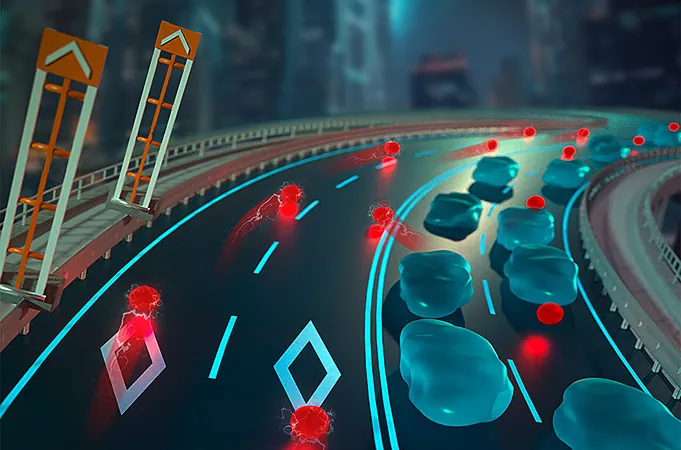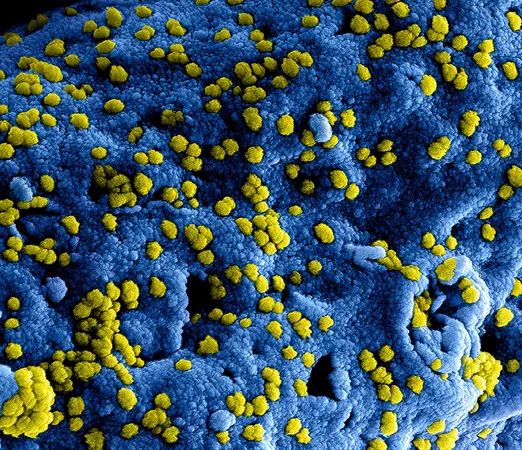
Breaking Barriers: New Ion Speed Record Paves The Way for Revolutionary Tech Innovations
2024-11-19
Author: Liam
In a groundbreaking development that could revolutionize battery technologies and biosensing capabilities, researchers have achieved a stunning new record for ion movement using advanced nanoscience techniques. This exciting discovery promises to fuel advancements in various fields, including faster battery charging, innovative biosensing, soft robotics, and even neuromorphic computing—technology designed to mimic the human brain.
A collaborative team from Washington State University and Lawrence Berkeley National Laboratory has unveiled a method that accelerates the movement of ions by over ten times in mixed organic ion-electronic conductors. These conductors uniquely merge ion signaling, a mechanism inherent in biological systems like the human body, with electron signaling, which is the foundation of modern computing.
The research findings, published in the prestigious journal *Advanced Materials*, reveal a breakthrough technique that creates a dedicated "ion superhighway." By utilizing molecular designs that attract and concentrate ions into specialized nanochannels, scientists can significantly enhance the speed of ion transport.
"We're now capable of controlling biological signals in ways previously thought impossible," stated Brian Collins, a physicist at WSU and the senior author of the study. "The implications for energy storage and other applications are immense."
The dual capacity for both ion and electron movement within these conductors is essential for improving battery charging speeds and overall energy efficiency. Not only does this open avenues for enhanced energy storage systems, but it also supports the evolving field of neuromorphic computing, which seeks to replicate the thought processes of the brain.
Historically, the coordination between ion and electron movement remained poorly understood. Collins and his team discovered that while ions were flowing within the conductor, their sluggish pace was unintentionally linked to a complex matrix—akin to a tangled web—through which electrons traveled. "The ions were able to move, but they were bottlenecked by the intricate pathways needed for electron flow," Collins explained.
To address this, the researchers engineered a straight, nano-sized channel exclusively for ion movement, inspired by natural biological ion channels that facilitate movement of substances in and out of cells. They employed a novel approach by lining the channel with hydrophilic molecules that attract the water-soluble ions, allowing them to traverse the channel at unprecedented speeds—over ten times faster than in traditional water solutions. This achievement sets a record for the highest speed of ion movement observed in any known material.
In stark contrast, using hydrophobic molecules in the channels repelled the ions, forcing them back into the slower-moving tangled pathways. The researchers pinpointed a fascinating mechanism wherein chemical reactions could alter the nature of these molecules, effectively closing or opening the ion “superhighway” much like biological systems regulate ion transport through cell membranes.
Taking it a step further, the team created a sensor capable of rapidly detecting chemical reactions occurring near the nanochannels. When the chemical reactions trigger the opening or closing of the ion superhighway, this produces an electrical pulse detectable by computers—an advancement that could lead to significant strides in detecting environmental pollutants or monitoring neural activity in real-time.
As Collins optimistically noted, "Our next move is to deeply explore the fundamental mechanisms governing ion movement and translate this new scientific phenomenon into practical applications across various technologies." This groundbreaking research could unlock the door to a myriad of innovations, reshaping our interactions with technology and the environment for years to come.









 Brasil (PT)
Brasil (PT)
 Canada (EN)
Canada (EN)
 Chile (ES)
Chile (ES)
 España (ES)
España (ES)
 France (FR)
France (FR)
 Hong Kong (EN)
Hong Kong (EN)
 Italia (IT)
Italia (IT)
 日本 (JA)
日本 (JA)
 Magyarország (HU)
Magyarország (HU)
 Norge (NO)
Norge (NO)
 Polska (PL)
Polska (PL)
 Schweiz (DE)
Schweiz (DE)
 Singapore (EN)
Singapore (EN)
 Sverige (SV)
Sverige (SV)
 Suomi (FI)
Suomi (FI)
 Türkiye (TR)
Türkiye (TR)